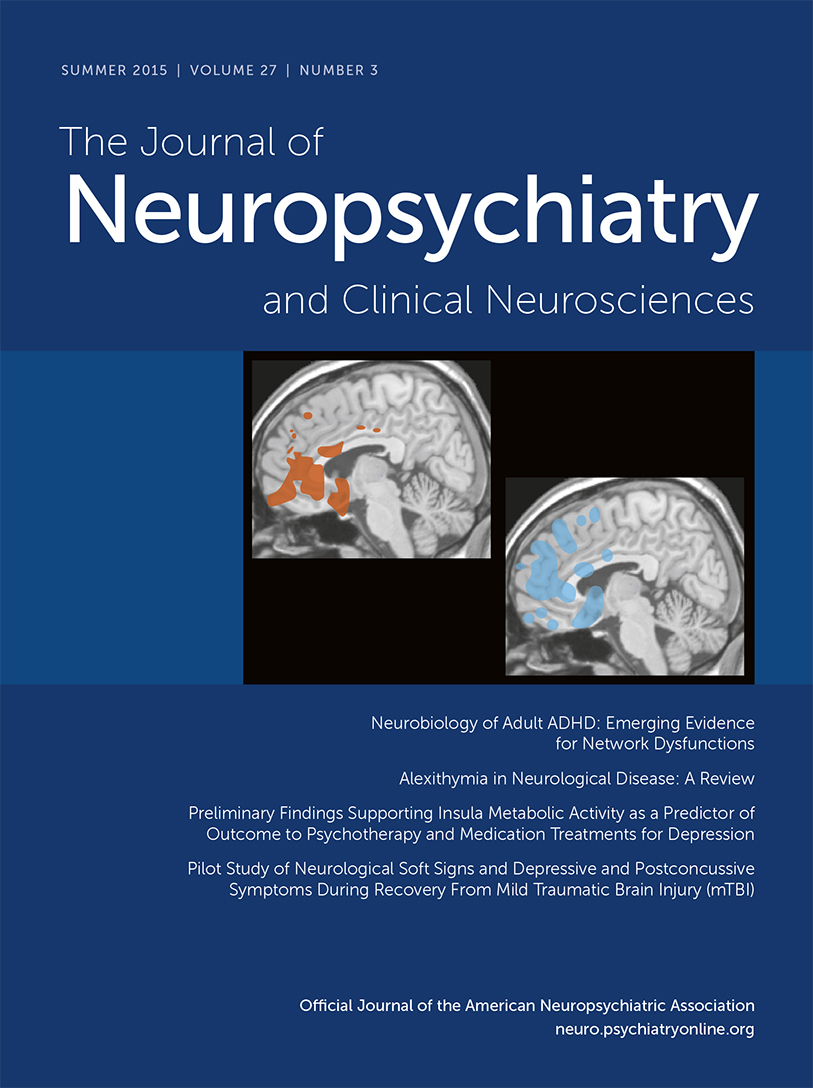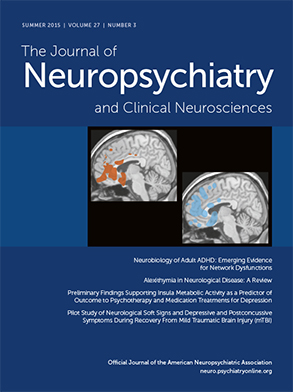Quality of life (QoL) refers to the general well-being of individuals and is affected by multiple factors including health-related conditions. In Parkinson disease (PD), it is well known that motor symptoms dramatically influence QoL.
1,2 However, nonmotor features also impact QoL, even more so than motor dysfunction in many patients.
2,3 Particularly detrimental to QoL are depression and anxiety.
4–6What remains unclear is whether apathy, a disorder of motivation/goal directed behavior that is distinct from depression and linked to disease progression, also exerts detrimental effects on QoL.
7,8 This is important because treatments for apathy and depression may differ, and the use of selective serotonin reuptake inhibitors may actually worsen apathy.
9 On one hand, some have argued that apathy is not associated with QoL, although it is associated with worsened cognition and functional abilities.
10 Others, however, have found that newly diagnosed patients with PD with heightened levels of apathy reported worse QoL across multiple life domains (i.e., mobility, self-care, pain/discomfort, mood).
11One possibility accounting for these divergent views is that, although depression and apathy may reflect distinct syndromes, they share overlapping features and components. Recently, Kirsch-Darrow et al.
12 examined overlapping features of depression and apathy in PD and identified four factor-based constructs: 1) dysphoria or sadness (pure depression), 2) decreased interest (mixed depression and apathy), 3) pure apathy, and 4) somatic symptoms.
Discussion
This retrospective study including 107 patients with PD found that self-reported QoL was related to mood symptoms, primarily trait anxiety. However, further inspection revealed separate mood factors to contribute significantly to various domains of QoL. Although trait anxiety was the primary contributor to a majority of QoL domains (activities of daily living, communication, emotion, stigma, discomfort, and mobility), separate and overlapping factors of depression and apathy contributed to a number of QoL domains (activities of daily living, communication, social, cognition, emotion, and stigma). This study was unique in its ability to examine how separate factors of these mood disturbances contributed to various domains of QoL affected by PD.
Past studies examining the impact of anxiety and depression have found the presence of either mood symptom to be indicative of worse QoL.
5 Usually, symptoms of depression show a slightly stronger relationship with QoL than anxiety; however, this finding has not always been replicated.
24 A review of determinants of QoL revealed that both anxiety and depression are strongly related to QoL, but fewer studies of QoL examine anxiety than depression, on the order of 2:1.
25Regarding apathy, our finding of a significant correlation between apathy and QoL is consistent with a past study,
11 in which five separate domains of QoL (i.e., mobility, self-care, usual activities, pain, and mood) were found to be significantly related to apathy. However, the current study suggests that a majority of the variance in this relationship might be explained by overlapping symptoms of apathy with either anxiety or depression (e.g., reduced interest in learning new things, loss of interest, loss of pleasure, indecisiveness), rather than by symptoms that are unique to apathy (e.g., motivation, indifference, putting forth effort, relying on others to initiate daily activity). This is consistent with past findings that failed to show a relationship between the Apathy Evaluation Scale and the PDQ-8 (short form of PDQ-39) independent of depression.
12A previous review questioned the clinical importance of apathy and whether it was linked to meaningful outcomes.
10 Although apathy may only show a small relationship to QoL, there are at least two reasons why apathy should continue to be considered a useful construct in PD. First, apathy has been shown to significantly predict other meaningful outcomes including cognition/dementia status, disease severity, and functional abilities, with some of these studies specifying a contribution of apathy over and above that of depression.
12,26–29 Second, although apathy may not be related to self-reported QoL, caregiver QoL has yet to be thoroughly investigated. The impact of mood functioning among patients with PD has been linked to caregiver distress, and nonmotor symptoms have been shown to account for about twice as much variance in caregiver distress compared with motor symptoms.
30,31 At least one study to date has shown that caregivers of apathetic patients with PD experience a greater degree of caregiver burden compared with those who care for nonapathetic patients with PD.
32 A similar relationship between apathy and caregiver distress has also been reported among nondemented elderly individuals
33 and patients with other neurodegenerative disorders including Alzheimer’s disease, Lewy body dementia, and fronto-temporal dementia.
34–36There are several limitations in the current study. First, a convenience sample of nondemented patients receiving outpatient clinical care was used and may limit the generalizability of these findings. Second, as with all cross-sectional studies, the directionality of the relationships cannot be specified. It is possible that having worse QoL may contribute to patients developing depressed, apathetic, or anxious phenotypes or that the inverse is true and that mood disturbances lead to worse QoL. The use of a cross-sectional sample also limits the ability to inspect the trajectory/changes in mood symptoms and QoL across different stages of PD. Additionally, there are concerns about the validity of the subdomains of the PDQ-39.
37 Future studies could benefit from using additional clinical measures of QoL and mood functioning, including a mixture of state/trait measures and DSM-V diagnoses. Next, we did not look at factors within the STAI measure to exclude items within this anxiety measure that overlap with depression or apathy. Bieling et al.
38 reported that the trait scale of the STAI includes items assessing depression and negative affect in addition to pure anxiety. As a result, our measure of anxiety was not a measure of pure anxiety and likely accounted for some overlapping symptoms of depression, less likely apathy, when entered into the regression, thus reducing the observed influence of other mood factors in our model. However, the presence of sufficient collinearity diagnostics suggests that anxiety scores did not significantly reduce the ability to detect unique effects of apathy or depression. Last, as mentioned previously, this study was unable to account caregiver QoL, which may be affected by the patient’s mood symptoms in a unique way.
Overall, common mood disturbances are indicative of worse QoL among patients with PD. Although anxiety may have the most detrimental effect on QoL, symptoms of depression and apathy may be linked to specific domains of QoL. Apathy, depression, and anxiety may respond differently to separate pharmaceutical and behavioral therapies.
9 The investigation of the relationship between separate mood components and QoL may have implications for interventions (i.e., which treatment might be most effective among individuals with comorbid disorders) and targeted outcomes of future intervention trials.

